
Jerry Eugene Pournelle was an American scientist in the area of operations research and human factors research, a science fiction writer, essayist, journalist, and one of the first bloggers. In the 1960s and early 1970s, he worked in the aerospace industry, but eventually focused on his writing career. In an obituary in Gizmodo, he was described as "a tireless ambassador for the future."
Quantum Quality Productions was a computer games company specializing in strategy games and war games.

The Ancient Art of War is a computer wargame designed by Dave and Barry Murry of Evryware and published by Broderbund in 1984. It is one of the first real-time strategy or real-time tactics games.

Capstone Software was a subsidiary of IntraCorp, a Miami-based computer and video game company. Founded in 1984, Capstone created first-person games such as Corridor 7: Alien Invasion, Operation Body Count, William Shatner's TekWar and Witchaven, and is also known for releasing games based on movie/TV licenses. Capstone's first-person games used the Wolfenstein 3D engine, and later, the Build engine.
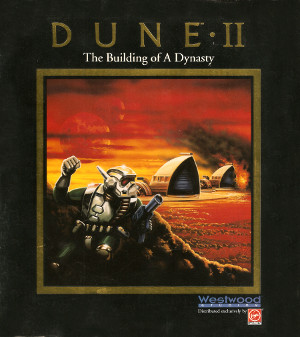
Dune II: The Building of a Dynasty is a 1992 real-time strategy game developed by Westwood Studios and published by Virgin Games. It serves as the sequel to Dune, which came out earlier that same year.

GATO is a real-time submarine simulator published in 1984 by Spectrum HoloByte for MS-DOS. It simulates combat operations aboard the Gato-class submarine USS Growler (SS-215) in the Pacific Theater of World War II. GATO was later ported to the Apple IIe, Atari ST, and Mac. In 1987, Atari Corporation published a version on cartridge for the Atari 8-bit computers, to coincide with the launch of the Atari XEGS.

Incunabula is a video game designed by Steve Estvanik and released by Avalon Hill for IBM PC compatibles in 1984. It is the original computerized version of Civilization board game, preceding Sid Meier's Civilization which was published in 1991.

Empire is a 1977 turn-based wargame with simple rules. The game was conceived by Walter Bright starting in 1971, based on various war films and board games, notably Battle of Britain and Risk. The game was ported to many platforms in the 1970s and 1980s. Several commercial versions were also released such as Empire: Wargame of the Century, often adding basic graphics to the originally text-based user interface.

Legionnaire is a computer wargame for Atari 8-bit computers created by Chris Crawford released through Avalon Hill in 1982. Recreating Julius Caesar's campaigns in a semi-historical setting, the player takes command of the Roman legions in real-time battles against the barbarians.

Close Combat is a 1996 real-time computer wargame developed by Atomic Games and published by Microsoft. Set during World War II, it simulates the conflict between the United States' 29th Infantry Division and Germany's 352nd Infantry Division after the Invasion of Normandy. The player controls an artificially intelligent army whose behavior is dictated by psychological models: each soldier makes decisions based on the circumstances of the battlefield and can disobey the player's orders.
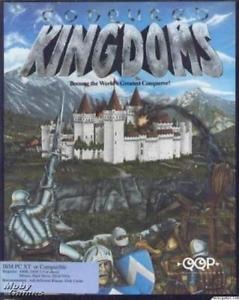
Conquered Kingdoms is a fantasy strategy computer game developed by Quantum Quality Productions for PC DOS/MS-DOS in 1992.

The Red Crystal: The Seven Secrets of Life is a role-playing video game for MS-DOS developed and published by Quantum Quality Productions in 1994.

The Great Battles of Alexander is a 1997 turn-based computer wargame developed by Erudite Software and published by Interactive Magic. Adapted from the GMT Games physical wargame of the same name, it depicts 10 of Alexander the Great's key conflicts, and simulates the interplay between Ancient Macedonian battle tactics and its rival military doctrines. Gameplay occurs at the tactical level: players direct predetermined armies on discrete battlefields, in a manner that one commentator compared to chess.

Operation Crusader is a 1994 computer wargame developed by Atomic Games and published by Avalon Hill.

Solitaire's Journey is a 1992 video game by Quantum Quality Productions for Amiga and DOS.
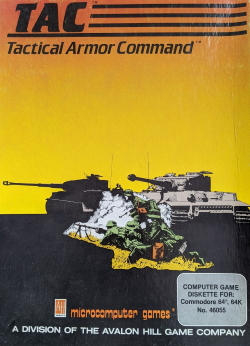
T.A.C. is a top-down tactical combat computer wargame published by Avalon Hill in 1983 for Apple II, Atari 8-bit computers, Commodore 64, and IBM PC. The game takes place during the Second World War and simulates clashes involving the United States, the USSR, Germany and the United Kingdom.
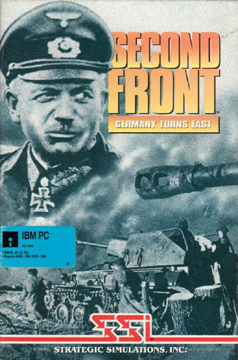
Second Front: Germany Turns East is a 1990 computer wargame developed and published by Strategic Simulations Inc. (SSI). Designed by Gary Grigsby, it is a spiritual successor to his earlier game War in Russia.
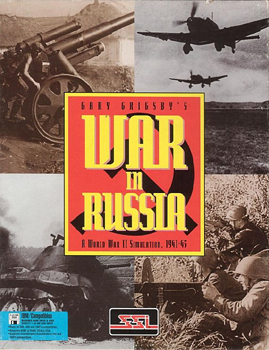
Gary Grigsby's War in Russia is a 1993 computer wargame developed and published by Strategic Simulations, Inc. Designed by Gary Grigsby, it is adapted from the 1990 title Second Front: Germany Turns East, itself adapted from Grigsby's 1984 War in Russia.
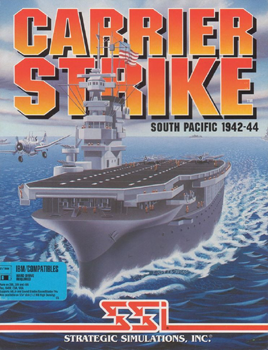
Carrier Strike: South Pacific 1942-44 is a 1992 computer wargame designed by Gary Grigsby and published by Strategic Simulations Inc. It is a successor to Grigsby's earlier title Carrier Force.

Patton Strikes Back: The Battle of the Bulge is a 1991 computer wargame designed by Chris Crawford and published by Broderbund for the Macintosh and MS-DOS.



















